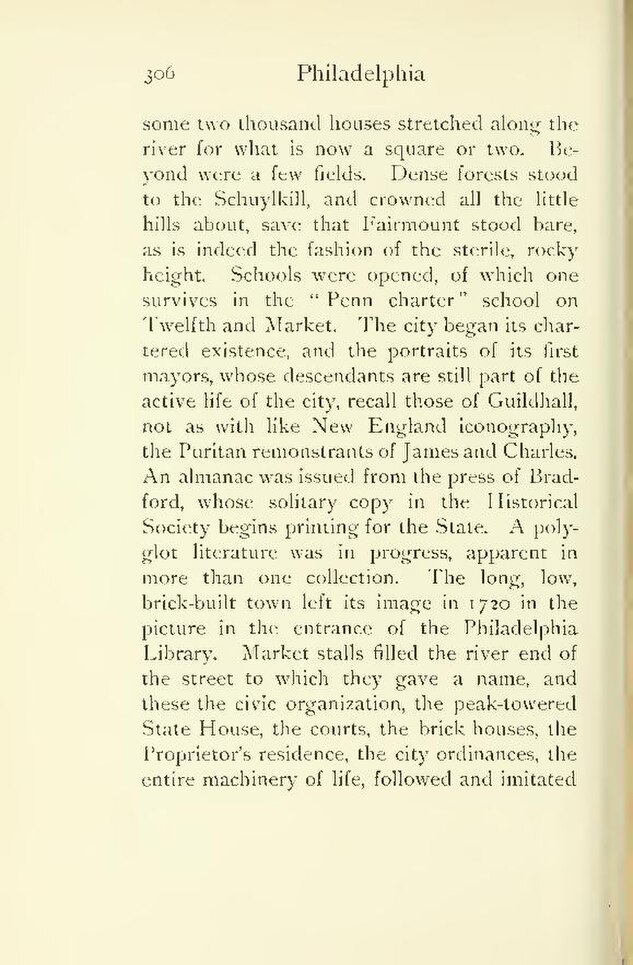some two thousand houses stretched along the river for what is now a square or two. Beyond were a few fields. Dense forests stood to the Schuylkill, and crowned all the little hills about, save that Fairmount stood bare, as is indeed the fashion of the sterile, rocky height. Schools were opened, of which one survives in the "Penn charter" school on Twelfth and Market. The city began its chartered existence, and the portraits of its first mayors, whose descendants are still part of the active life of the city, recall those of Guildhall, not as with like New England iconography, the Puritan remonstrants of James and Charles. An almanac was issued from the press of Bradford, whose solitary copy in the Historical Society begins printing for the State. A polyglot literature was in progress, apparent in more than one collection. The long, low, brick-built town left its image in 1720 in the picture in the entrance of the Philadelphia Library. Market stalls filled the river end of the street to which they gave a name, and these the civic organization, the peak-towered State House, the courts, the brick houses, the Proprietor's residence, the city ordinances, the entire machinery of life, followed and imitated
